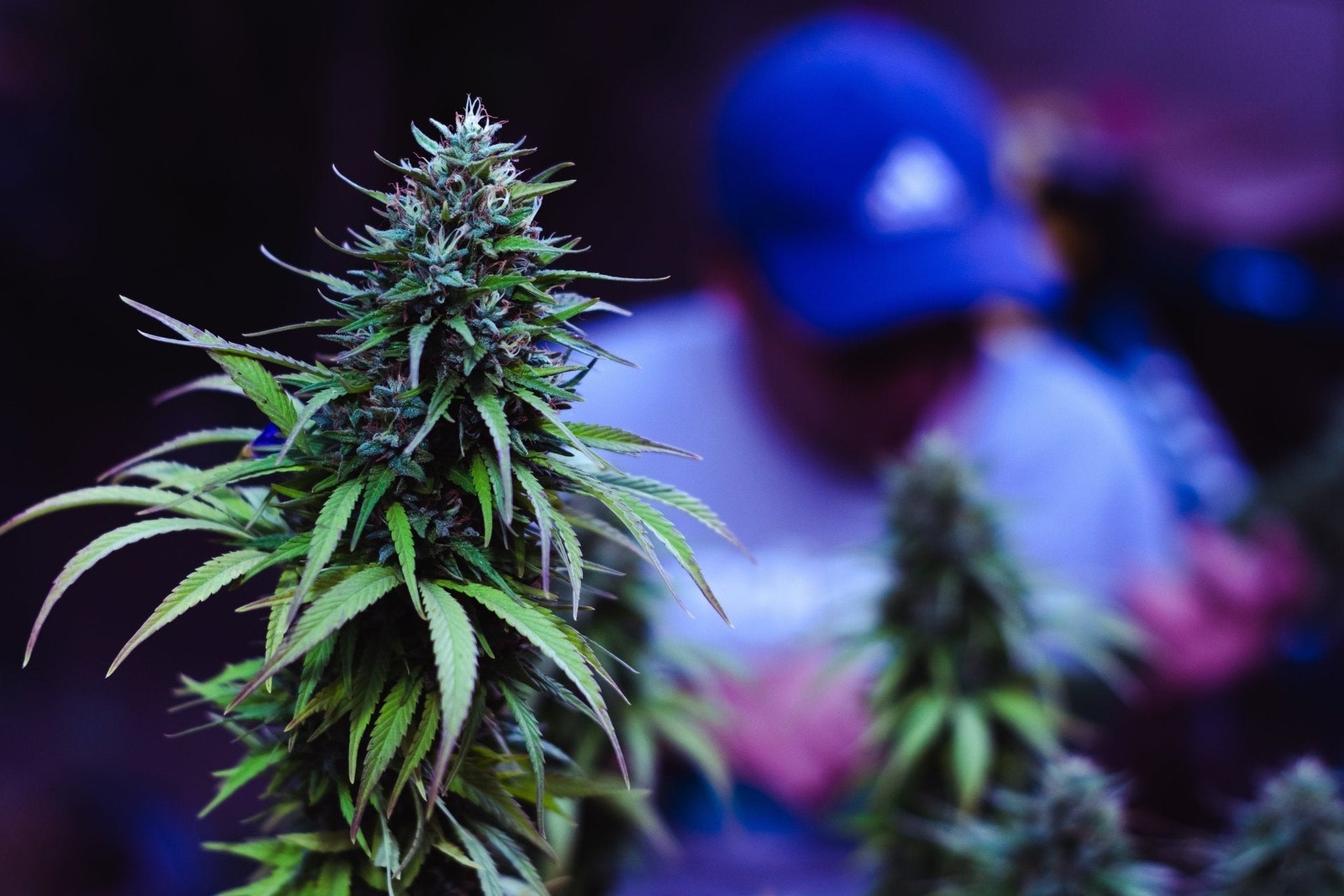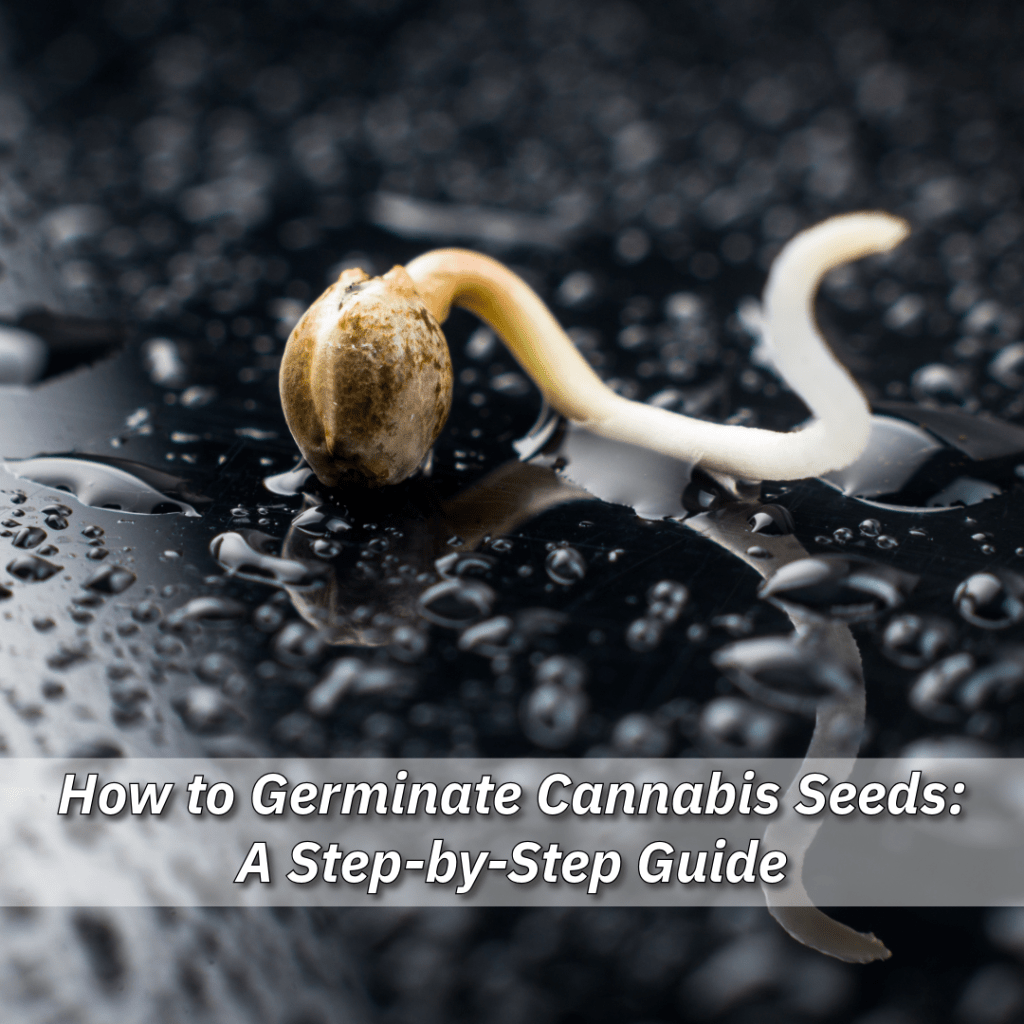
Beneficial Insects for Pest Control in Cannabis Cultivation
Pests are one of the biggest challenges in cannabis cultivation, threatening yield, plant health, and overall quality. While chemical pesticides are an option, they can negatively impact the environment, beneficial microorganisms, and even the final product. Instead, biological pest control using beneficial insects is a sustainable, effective, and eco-friendly solution.
In this guide, we’ll explore the best beneficial insects for cannabis cultivation, how they work, and how to introduce them successfully into your grow space.
1. Common Pests in Cannabis Cultivation

Before introducing beneficial insects, it’s essential to identify the most common cannabis pests:
✔ Spider Mites: Tiny arachnids that suck plant sap, leading to yellowing and damage.
✔ Thrips: Winged insects that leave silvery patches on leaves and stunt plant growth.
✔ Aphids: Small, soft-bodied pests that multiply rapidly and cause leaf curling.
✔ Fungus Gnats: Larvae that feed on roots, leading to weak and unhealthy plants.
✔ Whiteflies: Sap-sucking insects that spread plant diseases.
💡 Tip: Regular pest monitoring can prevent infestations before they become severe.
2. Top Beneficial Insects for Pest Control
Using the right beneficial insects can keep pests under control naturally. Here are the most effective options:
Ladybugs (Hippodamia convergens)
✔ Target Pests: Aphids, whiteflies, thrips
✔ How They Work: Ladybugs are voracious predators, consuming hundreds of aphids in their lifetime.
✔ Best Used: When aphid populations begin to appear.
Predatory Mites (Phytoseiulus persimilis & Neoseiulus californicus)
✔ Target Pests: Spider mites
✔ How They Work: These mites actively hunt and feed on spider mites, keeping their population under control.
✔ Best Used: As a preventive measure or at the first sign of spider mite infestation.
Green Lacewings (Chrysoperla carnea)
✔ Target Pests: Thrips, aphids, whiteflies, mealybugs
✔ How They Work: Lacewing larvae, often called "aphid lions," devour soft-bodied insects before they can spread.
✔ Best Used: During early plant growth stages to prevent infestations.
Parasitic Wasps (Encarsia formosa & Aphidius colemani)
✔ Target Pests: Whiteflies and aphids
✔ How They Work: These wasps lay their eggs inside pests, which are later consumed by the developing larvae.
✔ Best Used: In greenhouse or indoor settings for continuous pest control.
Rove Beetles (Dalotia coriaria)
✔ Target Pests: Fungus gnat larvae
✔ How They Work: These ground-dwelling predators hunt and eat fungus gnats before they damage roots.
✔ Best Used: In organic soil grows or hydroponic setups to keep roots pest-free.
💡 Tip: Combining multiple beneficial insects provides broader pest control coverage.
3. How to Introduce Beneficial Insects into Your Grow Space

Step 1: Monitor and Identify Pests
Before introducing predators, confirm which pests are present to select the most effective beneficial insects.
Step 2: Release Beneficial Insects at the Right Time
✔ Evening or Early Morning: Releases should be done when temperatures are cooler.
✔ Spread Evenly: Ensure insects are distributed throughout the grow area.
✔ Repeat Applications: Some insects need reapplications for long-term success.
Step 3: Provide a Suitable Environment
✔ Avoid Chemical Sprays: Pesticides can harm beneficial insects.
✔ Provide Food Sources: Some predatory insects need small prey or pollen to sustain themselves.
✔ Ensure Proper Humidity & Temperature: Some insects thrive in specific climate conditions.
4. Common Mistakes to Avoid
🚫 Releasing beneficial insects too late: They work best as a preventive measure, not a last resort.
🚫 Using the wrong species for the pest: Matching the right predator to the infestation is crucial.
🚫 Overusing pesticides: Even organic sprays can disrupt beneficial insect populations.
💡 Tip: Regularly monitor pest populations and beneficial insect activity to assess effectiveness.
Biological pest control is an eco-friendly and highly effective way to protect cannabis plants without the risks associated with chemical pesticides. By introducing beneficial insects, you can create a self-sustaining pest management system that keeps plants healthy and productive.
🚀 Upgrade your grow with natural pest control! Explore high-quality cannabis genetics at TerpHunters and cultivate a thriving, pest-resistant garden!
Pests are one of the biggest challenges in cannabis cultivation, threatening yield, plant health, and overall quality. While chemical pesticides are an option, they can negatively impact the environment, beneficial microorganisms, and even the final product. Instead, biological pest control using beneficial insects is a sustainable, effective, and eco-friendly solution.
In this guide, we’ll explore the best beneficial insects for cannabis cultivation, how they work, and how to introduce them successfully into your grow space.
1. Common Pests in Cannabis Cultivation

Before introducing beneficial insects, it’s essential to identify the most common cannabis pests:
✔ Spider Mites: Tiny arachnids that suck plant sap, leading to yellowing and damage.
✔ Thrips: Winged insects that leave silvery patches on leaves and stunt plant growth.
✔ Aphids: Small, soft-bodied pests that multiply rapidly and cause leaf curling.
✔ Fungus Gnats: Larvae that feed on roots, leading to weak and unhealthy plants.
✔ Whiteflies: Sap-sucking insects that spread plant diseases.
💡 Tip: Regular pest monitoring can prevent infestations before they become severe.
2. Top Beneficial Insects for Pest Control
Using the right beneficial insects can keep pests under control naturally. Here are the most effective options:
Ladybugs (Hippodamia convergens)
✔ Target Pests: Aphids, whiteflies, thrips
✔ How They Work: Ladybugs are voracious predators, consuming hundreds of aphids in their lifetime.
✔ Best Used: When aphid populations begin to appear.
Predatory Mites (Phytoseiulus persimilis & Neoseiulus californicus)
✔ Target Pests: Spider mites
✔ How They Work: These mites actively hunt and feed on spider mites, keeping their population under control.
✔ Best Used: As a preventive measure or at the first sign of spider mite infestation.
Green Lacewings (Chrysoperla carnea)
✔ Target Pests: Thrips, aphids, whiteflies, mealybugs
✔ How They Work: Lacewing larvae, often called "aphid lions," devour soft-bodied insects before they can spread.
✔ Best Used: During early plant growth stages to prevent infestations.
Parasitic Wasps (Encarsia formosa & Aphidius colemani)
✔ Target Pests: Whiteflies and aphids
✔ How They Work: These wasps lay their eggs inside pests, which are later consumed by the developing larvae.
✔ Best Used: In greenhouse or indoor settings for continuous pest control.
Rove Beetles (Dalotia coriaria)
✔ Target Pests: Fungus gnat larvae
✔ How They Work: These ground-dwelling predators hunt and eat fungus gnats before they damage roots.
✔ Best Used: In organic soil grows or hydroponic setups to keep roots pest-free.
💡 Tip: Combining multiple beneficial insects provides broader pest control coverage.
3. How to Introduce Beneficial Insects into Your Grow Space

Step 1: Monitor and Identify Pests
Before introducing predators, confirm which pests are present to select the most effective beneficial insects.
Step 2: Release Beneficial Insects at the Right Time
✔ Evening or Early Morning: Releases should be done when temperatures are cooler.
✔ Spread Evenly: Ensure insects are distributed throughout the grow area.
✔ Repeat Applications: Some insects need reapplications for long-term success.
Step 3: Provide a Suitable Environment
✔ Avoid Chemical Sprays: Pesticides can harm beneficial insects.
✔ Provide Food Sources: Some predatory insects need small prey or pollen to sustain themselves.
✔ Ensure Proper Humidity & Temperature: Some insects thrive in specific climate conditions.
4. Common Mistakes to Avoid
🚫 Releasing beneficial insects too late: They work best as a preventive measure, not a last resort.
🚫 Using the wrong species for the pest: Matching the right predator to the infestation is crucial.
🚫 Overusing pesticides: Even organic sprays can disrupt beneficial insect populations.
💡 Tip: Regularly monitor pest populations and beneficial insect activity to assess effectiveness.
Biological pest control is an eco-friendly and highly effective way to protect cannabis plants without the risks associated with chemical pesticides. By introducing beneficial insects, you can create a self-sustaining pest management system that keeps plants healthy and productive.
🚀 Upgrade your grow with natural pest control! Explore high-quality cannabis genetics at TerpHunters and cultivate a thriving, pest-resistant garden!




